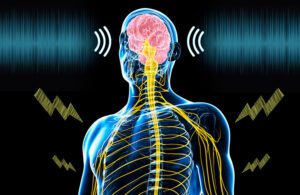
Chronic pain might be treatable using a combination of sound and electrical stimulation. [Image courtesy of the University of Minnesota]
University of Minnesota researchers are using sound and electrical stimulation to treat chronic pain and other sensory disorders without pharmaceutical drugs.
The combination of sound and stimulation activates the brain’s somatosensory cortex, according to a study on guinea pigs published in the Journal of Neural Engineering. Also known as the tactile cortex, the somatosensory cortex is the part of the brain responsible for touch and pain sensation.
“Chronic pain is a huge issue for a lot of people, and for most, it’s not sufficiently treatable,” lead author Cory Gloeckner said in a news release. “Right now, one of the ways that we try to treat pain is opioids, and we all know that doesn’t work out well for many people. This, on the other hand, is a non-invasive, simple application. It’s not some expensive medical device that you have to buy in order to treat your pain. It’s something that we think would be available to pretty much anyone because of its low cost and simplicity.”
Adding sound to the brain stimulation mix
The research builds on the use of acupuncture or electrical stimulation to alter brain activity for pain, senior author Hubert Lim said. “Our research shows that when you combine this with sound, the brain lights up even more.”
RELATED: How temporary neurostimulation can treat chronic pain long-term
The researchers played broadband sound while using needles to electrically stimulate guinea pigs in different parts of their bodies. The combination of sound and electrical stimulation activated neurons in the somatosensory cortex, the researchers said. They also found it’s possible to achieve a similar effect with transcutaneous electrical nerve stimulation units.
“It’s odd to think about using sound to treat pain, but if you think about what institutes like the University of Minnesota’s Center for Spirituality and Healing or the NIH’s National Center for Complementary and Integrative Health are doing, they’re looking at music therapy and combining other modalities with the traditional methods to be able to enhance healing of these types of conditions,” Lim said. “This research gives us a new, structured framework for doing that moving forward.”
The researchers will continue their investigation into chronic pain, potentially with music therapy, they said.
The National Science Foundation, the Lions Hearing Foundation, the University of Minnesota Interdisciplinary Fellowship and University of Minnesota Lab Startup Funds funded the study.